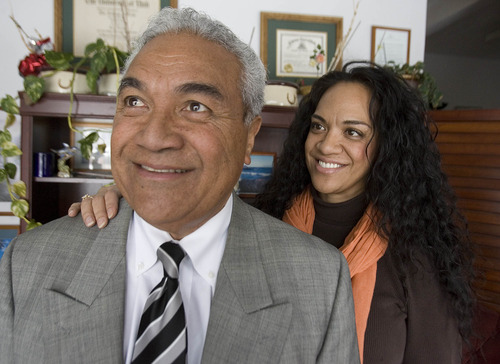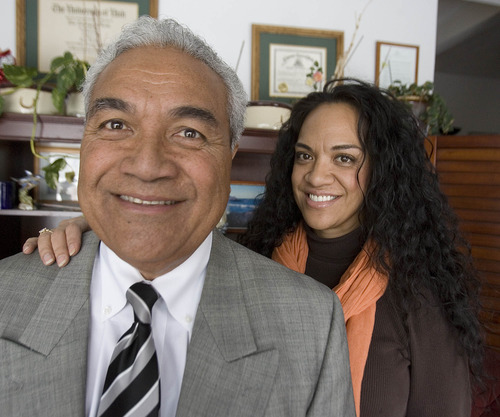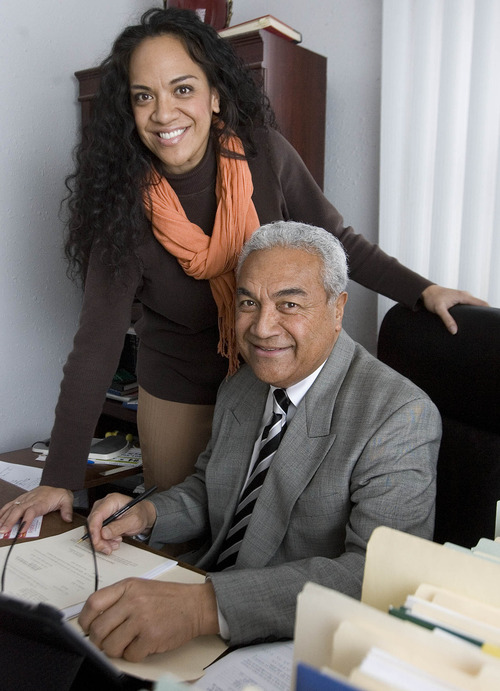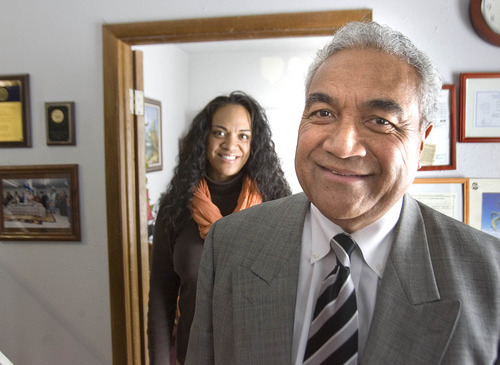This is an archived article that was published on sltrib.com in 2013, and information in the article may be outdated. It is provided only for personal research purposes and may not be reprinted.
The very first Tongan in the United States is said to have come to Utah with a returning LDS missionary in 1924, followed by another in 1936.
And from such tiny numbers, Pacific Islander communities in Utah flourish today, spreading rich and distinctive cultural influences as they grow.
Utah's per-capita share of residents with ancestral links to the tropical Pacific isles of Tonga, Samoa, Hawaii, Tahiti, Guam, Fiji and to Maori peoples of New Zealand is now the highest in the continental U.S., and behind only Hawaii and Alaska nationwide. In raw numbers, only California, Hawaii and Washington boast larger populations of residents claiming exclusively native Hawaiian and other Pacific Island descent than the Beehive State.
And while Pacific Islanders in Utah still live primarily where they have clustered for decades — along the urban Wasatch Front and in Washington County — census tallies in 2011 marked the first time all 29 counties counted Pacific Islanders among their residents.
"Watching the local football teams, there are Polynesian names all over the place,'' said Ben Au, 61, chairman of the Salt Lake City-based Pacific Islander Chamber of Commerce. "Instead of just Hunter High School, Granger and Kearns, these days it's Brighton, Skyline, Bingham, up north, all over Utah County.''
Vestiges of Pacific Island culture are visible throughout a state that is still overwhelmingly white.
Beyond sports, a wide range of social groups, clubs, associations and schools maintain Polynesian traditions of song, dance, story-telling, canoeing and various flower-laden annual celebrations. Island cuisine — commonly built around bananas, fish or roasted pork — as well as ethnic staples such as yam-like taro and ufi roots are widely available, especially in Salt Lake City and West Valley. Polynesians hold highly visible roles in virtually all walks of Utah society.
The estimated 36,777 Utahns who label themselves as having native Hawaiian or other Pacific Islander origins now account for a little more than four of every 30 of the state's 2.8 million residents, according to recent U.S. Census data. The group grew by between 60 and 70 percent in the past decade alone.
While Pacific Islanders in Utah now hold a variety of religious faiths, the group's roots reach back to initial Mormon missionary contacts with natives of Tahiti and surrounding Pacific islands as early as 1844, three years before Latter-day Saints arrived in the Salt Lake Valley.
Forty-five years later, as many as 75 Polynesians largely of Hawaiian descent established a Mormon colony in Utah named Iosepa in Skull Valley, 75 miles southwest of Salt Lake City. The desert enclave failed to thrive, its residents sapped by the harsh elements and, at one point, an outbreak of leprosy. Many left when The Church of Jesus Christ of Latter-day Saints announced it would build a temple on plantation property in Laie, Hawaii.
But many also stayed and have continued to arrive from the Pacific islands, led here by ongoing Mormon missionary work in the region, ties to family already settled here and the promise of economic and educational betterment.
Tongans and Samoans are now the largest segment of Utah's Polynesian community, accounting for more than two-thirds of the Pacific Islander population. Recent evidence also suggests increasing numbers of Pacific Islanders claim mixed origins, part of patterns of intermarriage among those of different Polynesian ancestries and with other ethnic groups, a broadening trend over the past two decades, nationally and in Utah.
The word "ohana" in Hawaiian refers to a heightened sense of family bonds that is basic to Pacific Islander heritage. These bonds flow in part from actual blood lines traceable to ancient island family networks and in part from traditional respect, honor and loyalty accorded to elders, whether directly related or not.
This broad sense of family is crucial in understanding demographic trends and day-to-day workings of the community, its members say.
"We're all inter-related on some level," said Bev Uipi, a multicultural adviser to Utah Gov. Gary Herbert and daughter of Filia Uipi, an attorney and first Tongan member of the Utah Legislature. "We know who our fourth and fifth cousins are, and these are family connections that people don't always see from the outside looking in."









